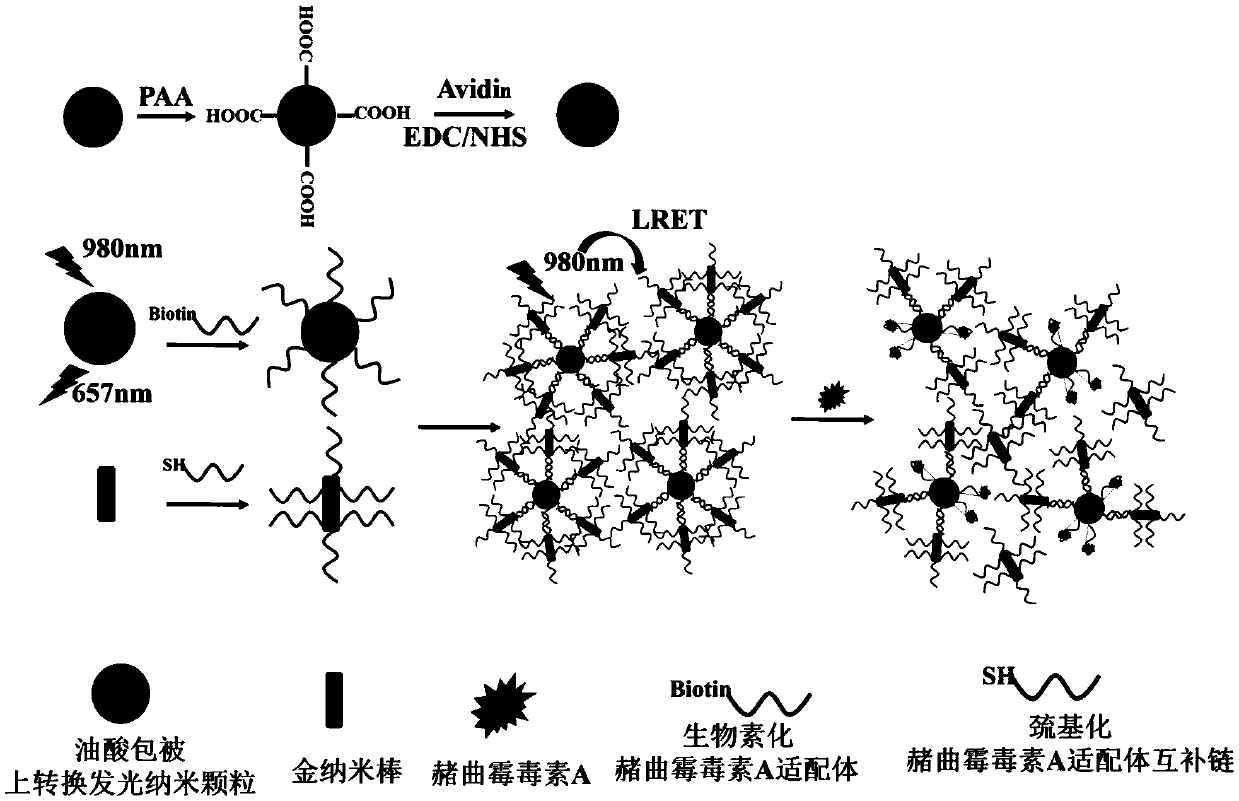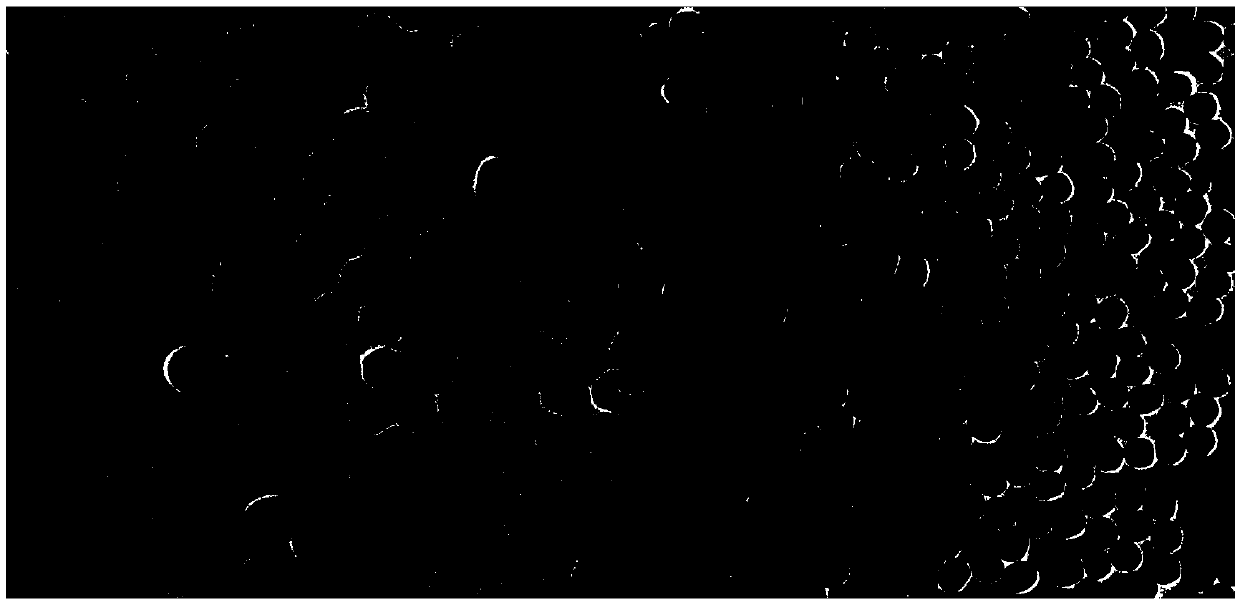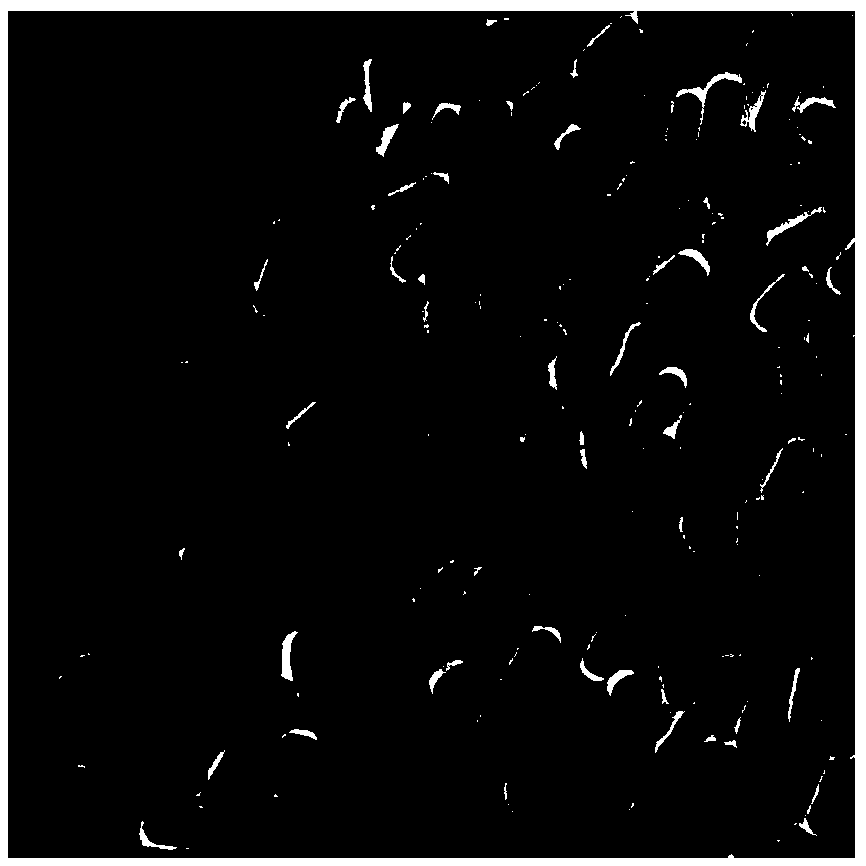Method for detecting ochratoxin A (OTA) based on luminescence resonance energy transfer between up-conversion luminescence nano-material and gold nano-rods
A resonance energy transfer, ochratoxin technology, applied in the fields of nanomaterials and analytical chemistry, can solve the problems of antibodies being easily affected by external conditions, high detection cost, cumbersome and time-consuming, etc., and achieves easy chemical modification, improved sensitivity, and good stability. Effect
- Summary
- Abstract
- Description
- Claims
- Application Information
AI Technical Summary
Problems solved by technology
Method used
Image
Examples
Embodiment 1
[0030] Example 1: Establishment of standard curve for detection of ochratoxin A in actual beer samples and pretreatment of test samples: beer samples were refrigerated at 4° C. for 30 minutes, and degassed by ultrasound. Take 20g of degassed beer sample, put it in a 25mL volumetric flask, add 2% sodium bicarbonate and 15% sodium chloride and mix the extract to the mark, mix well, filter with glass fiber filter paper until clear, collect the filtrate for later use.
[0031] 5 different types of beer were purchased from a local supermarket, and the content of ochratoxin A was determined by using the method of the present invention and the enzyme-linked immunosorbent method, and the results are shown in Table 1. The detection results of the two methods were consistent with no significant difference.
[0032] Table 1: The actual sample detection of beer, the method of the present invention is compared with the Elisa method
[0033]
[0034] Note: ND is not detected
Embodiment 2
[0035] Example 2: The detection of ochratoxin A in the actual beer sample and the recovery rate of standard addition The experimental sample pretreatment is the same as that in Example 1.
[0036] Using the 5 groups of ochratoxin A concentration data obtained in Example 1 as the background value, five OTA standard substances with different concentrations were added thereto, and the OTA content was detected again by the method of the present invention to obtain the detected value. Recovery %=(detection value-background value) / addition amount X100%. It can be seen from the data in Table 2 that the recovery rate is 93.4% to 119%, indicating that the present invention is stable, sensitive and accurate, and is applicable to the detection of OTA in actual beer samples.
[0037] Table 2: Detection and recovery of ochratoxin A in actual beer samples
[0038]
Embodiment 3
[0039] Embodiment 3: Ochratoxin A detection standard curve establishment and detection sample pretreatment in wheat actual sample
[0040] Grind wheat, hard grain, etc. with a high-speed universal grinder and pass through a 1mm aperture test sieve, do not grind into powder. Weigh 20g (accurate to 0.01g) of ground wheat sample into a 100mL volumetric flask, add 5g of sodium chloride, add 80% methanol extract to the mark, mix well, transfer to a homogeneous cup, and extract with high-speed stirring for 2min . Quantitative filter paper filtration, pipette 10.0mL filtrate into a 50mL volumetric flask, add water to volume, mix well, filter with glass fiber filter paper until the filtrate is clear, collect filtrate A in a clean container.
[0041] Nine different kinds of wheat were purchased from a local supermarket, and the content of ochratoxin A was determined by using the method of the present invention and the enzyme-linked immunosorbent method, and the results are shown in Ta...
PUM
 Login to View More
Login to View More Abstract
Description
Claims
Application Information
 Login to View More
Login to View More - R&D
- Intellectual Property
- Life Sciences
- Materials
- Tech Scout
- Unparalleled Data Quality
- Higher Quality Content
- 60% Fewer Hallucinations
Browse by: Latest US Patents, China's latest patents, Technical Efficacy Thesaurus, Application Domain, Technology Topic, Popular Technical Reports.
© 2025 PatSnap. All rights reserved.Legal|Privacy policy|Modern Slavery Act Transparency Statement|Sitemap|About US| Contact US: help@patsnap.com



